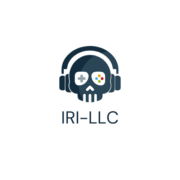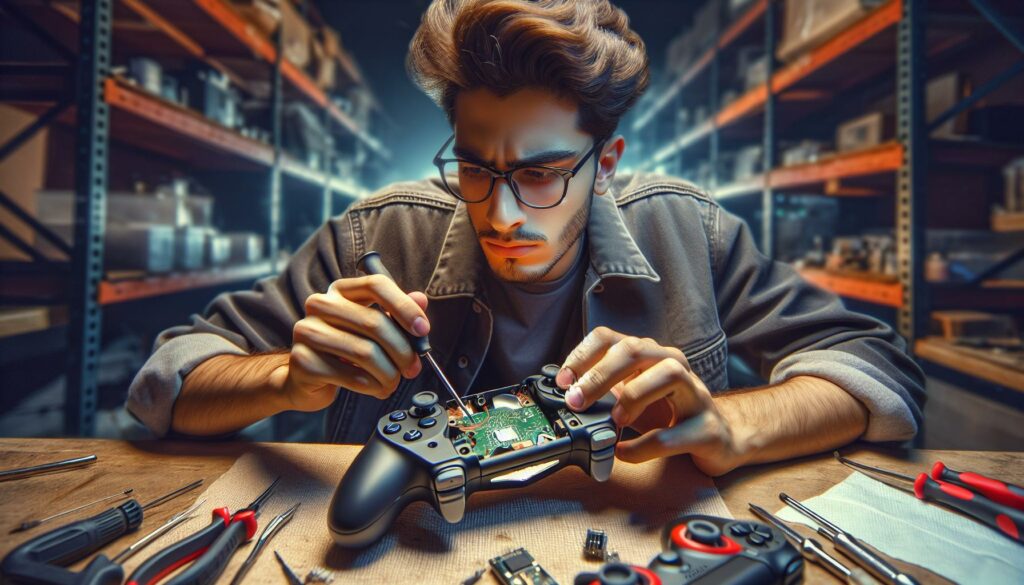The Nintendo Switch Pro Controller is a favorite for gamers who crave precision and comfort during their gameplay. But like any piece of technology, it can run into issues that disrupt your gaming experience. Whether it’s drifting analog sticks or unresponsive buttons, knowing how to tackle these problems can save you time and money.
- Common Issues Identified: The Nintendo Switch Pro Controller often faces problems like drifting analog sticks, button malfunctions, and battery life concerns, which can hinder gaming performance.
- DIY Repair Savings: Repairing the controller can be a cost-effective alternative to buying a new one, as many users can manage minor fixes themselves with proper guidance.
- Essential Repair Tools: A precision screwdriver set, tweezers, and cleaning materials, like isopropyl alcohol, are essential for effective controller repairs.
- Step-by-Step Approach: The repair process involves careful disassembly, diagnosis of the issue, and replacement of faulty components to restore controller functionality.
- Maintenance for Longevity: Regular cleaning, wise charging practices, and proper storage can significantly prolong the life of the Nintendo Switch Pro Controller.
- Preventative Measures: Utilizing screen protectors, avoiding food and drink near the controller, and performing regular functionality tests can help prevent issues before they arise.
Nintendo Switch Pro Controller Repair
The Nintendo Switch Pro Controller offers a comfortable grip and responsive controls that elevate the gaming experience. Its design features ergonomic contours, ensuring prolonged gaming sessions remain enjoyable. Gamers appreciate the high-quality buttons and precise analog sticks, enhancing precision in gameplay.
Common issues with the Pro Controller include drifting analog sticks, where characters may move without input, and unresponsive buttons, which hinder gameplay. These problems stem from wear, dust accumulation, or internal component failure. Understanding how to identify and resolve these issues helps maintain controller performance and longevity. Regular maintenance, such as cleaning, can mitigate some common problems.
Choosing to repair a Nintendo Switch Pro Controller can save money compared to purchasing a new one. With step-by-step guides available, many users can confidently tackle minor repairs themselves, ensuring their controller remains in peak condition.
Common Issues with Nintendo Switch Pro Controller
Nintendo Switch Pro Controllers can experience several issues that impact gameplay and usability. Familiarizing myself with these problems allows for quicker troubleshooting and effective repairs.
Connectivity Problems
Connectivity problems often manifest as inconsistent wireless signals or difficulty syncing with the console. Issues may arise due to interference from other wireless devices or low battery levels. To mitigate these problems, I ensure the controller is fully charged and within a reasonable distance from the Nintendo Switch. If connectivity fails, resetting the controller by pressing the sync button may resolve the issue.
Button Malfunctions
Button malfunctions frequently include unresponsive or sticky buttons, which can hinder gameplay. These problems usually stem from dirt, dust, or liquid accumulation beneath the buttons. I regularly clean the controller using compressed air and isopropyl alcohol to keep buttons functioning properly. If cleaning doesn’t help, I consider disassembling the controller to check for damaged or worn-out components that may require replacement.
Battery Life Concerns
Battery life concerns typically involve rapid depletion or failure to charge adequately. Factors such as excessive usage or aging batteries can contribute to these issues. I monitor the battery’s health and, if necessary, replace the battery myself using specific tools and components. Proper care, like not using the controller while charging, helps extend battery life.
Tools and Materials Needed for Repair
For effective Nintendo Switch Pro Controller repairs, specific tools and materials ensure efficiency and ease. Here’s a precise list of what I gather before starting:
- Screwdriver Set: A precision screwdriver set with Phillips and Tri-wing bits enables access to the controller’s screws.
- Tweezers: Fine-tipped tweezers assist in handling small components during disassembly.
- Prying Tools: Plastic prying tools help separate the controller casing without causing damage.
- Opening Picks: Guitar picks or specialized opening picks ensure the casing opens smoothly.
- Isopropyl Alcohol: A 70% isopropyl alcohol solution is effective for cleaning internal parts and contacts.
- Cotton Swabs: Cotton swabs provide a means to apply cleaning solution precisely and gently.
- Replacement Parts: Depending on the issue, replacement analog sticks, buttons, or batteries may be needed.
- Anti-static Wrist Strap: This strap prevents static discharge while working with electronic components.
Consolidating these tools and materials creates a proper setup for the repair process.
Step-by-Step Repair Process
I’ll guide you through a straightforward repair process for the Nintendo Switch Pro Controller, covering disassembly, diagnosis, and component replacement.
Disassembling the Controller
Disassembling the controller requires precision and care. First, gather your tools: a precision screwdriver set, opening picks, and a prying tool. Next, turn the controller over and remove the screws located on the back panel. Keep track of each screw to facilitate reassembly. After removing the screws, gently pry open the controller casing using the opening picks. Take your time to avoid damaging clips. Once the casing is open, you’ll have access to the internal components for further inspection and repair.
Diagnosing the Problem
Diagnosis involves identifying specific issues affecting the controller’s performance. Inspect the analog sticks for signs of wear or dust. Test all buttons to detect any that stick or fail to respond. Utilize isopropyl alcohol and cotton swabs to clean areas with dirt buildup. If the controller exhibits connectivity issues, verify the battery level and ensure no interference is present. If problems persist after cleaning and recharging, it indicates potential internal failures that require further attention.
Replacing Faulty Components
Replacing faulty components ensures optimal controller functionality. Identify damaged parts, such as analog sticks or buttons, and order appropriate replacements. Carefully detach the malfunctioning components from the circuit board using tweezers and a precision screwdriver. Align the new components with their respective sockets and gently press them into place. After securing all replacements, reassemble the controller by reversing the disassembly steps, ensuring all screws are tightened and the casing is properly aligned. Test the controller to confirm that repairs were successful before returning it to use.
Maintenance Tips for Prolonging Controller Life
I recommend several maintenance tips to prolong the life of your Nintendo Switch Pro Controller. Regular attention to these areas can enhance performance and prevent common issues.
- Keep It Clean
I regularly clean the controller’s surfaces using a microfiber cloth. Dust and grime accumulation can hamper functionality, especially around buttons and analog sticks. - Avoid Food and Drink
I ensure that I use the controller away from food and beverages. Spills can cause immediate damage, while crumbs can jam buttons and sticks. - Use a Screen Protector
I apply a screen protector on the console to prevent scratches and protect the controller from impact during gameplay. This extra layer can cushion accidental drops. - Store Properly
I store the controller in a cool, dry place. Extreme temperature changes can cause battery and electronic component issues. - Charge Wisely
I avoid leaving the controller plugged in for extended periods when fully charged. Frequent overcharging can degrade battery life. - Check for Software Updates
I periodically check for software updates for the Nintendo Switch. These updates often include improvements that can optimize controller performance. - Use a Carrying Case
I recommend using a padded carrying case for transport. This prevents scratches and potential damage during travel. - Test Regularly
I routinely test all buttons and sticks to ensure they respond correctly. Early detection of issues can facilitate timely repairs before they worsen.
By adhering to these maintenance tips, I maintain peak performance in my Nintendo Switch Pro Controller and significantly extend its usability.
Repairing my Nintendo Switch Pro Controller has been a rewarding experience. Not only can I save money by fixing common issues myself but I also gain a deeper understanding of how the controller works. By following the steps outlined in this article I can tackle problems like drifting sticks and unresponsive buttons with confidence.
Regular maintenance is key to prolonging the life of my controller. Simple practices like cleaning and proper storage can make a significant difference. With the right tools and a bit of patience I can keep my gaming experience smooth and enjoyable. So whether I’m diving into a new game or revisiting an old favorite my Pro Controller is ready to perform at its best.



